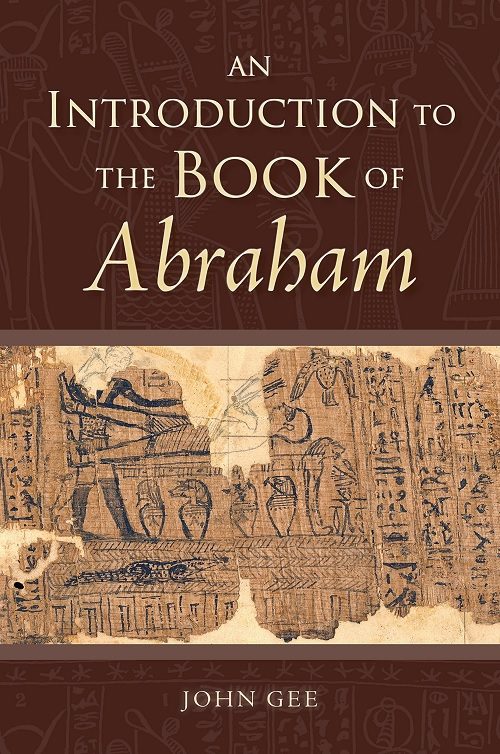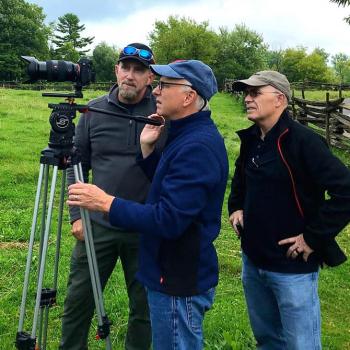
***
““The Wind and the Fire to Be My Chariot”: The Anachronism that Wasn’t”
Abstract: In the Book of Abraham, God tells Abraham in Haran, “I cause the wind and the fire to be my chariot” (Abraham 2:7). While this initially might appear to be an anachronism, as the chariot is normally thought to have been introduced later, archaeological finds of chariots at the site of Harran predate Abraham by hundreds of years.
“Interpreting Interpreter: Not-Actually-Anachronistic Chariots”
This post is a summary of the article “‘The Wind and the Fire to Be My Chariot’: The Anachronism that Wasn’t” by John Gee in Volume 50 of Interpreter: A Journal of Latter-day Saint Faith and Scholarship.
The full article can be read at https://interpreterfoundation.org/the-wind-and-the-fire-to-be-my-chariot-the-anachronism-that-wasnt/.
An introduction to the Interpreting Interpreter series is available at https://interpreterfoundation.org/interpreting-interpreter-on-abstracting-thought/.
“The Takeaway: Gee details an item that critics might look to as an anachronism–in this case, a reference to chariots in the Book of Abraham–and demonstrates how the issue disappears upon a closer reading of both the text and the historical record.”
***
A passage from Keith Ward, Why There Almost Certainly Is a God: Doubting Dawkins (Oxford: Lion, 2008), 22-23:
[T]he existence of conscious minds introduces a new form of non-scientific explanations for why things happen as they do. Scientific explanation, in general, works by referring to some initial state (a ’cause’) and a general mathematically describable law. That law predicts what regularly follows from the initial state, and it does so without any reference to purpose, value or consciousness.
But there is another sort of explanation. The Oxford philosopher Richard Swinburne (Dawkins wrongly calls him a theologian, probably because he disagrees with him so much) calls it ‘personal explanation’. It only comes into effect when persons, or conscious minds, exist. Then it explains some of the things that persons do in terms of knowledge, desire, intention and enjoyment.
If you want to explain how it is that I am writing these words, you could do so by showing that I am aware of some possible future states (I can stay in bed, have a coffee, or write these words), I evaluate one of them as desirable (I want to finish this book), I set in motion a causal process to bring about what I desire (I get out of bed), and finally I enjoy what I am doing, because it is what I wanted and desired to do.
This is personal explanation. It is a perfectly satisfactory form of explanation, and it does not seem to be reducible to scientific explanation. If it is, no one has yet plausibly suggested any idea of how to reduce it. How can my talk of knowledge, desires, intentions and awareness translate into statements of physics that only refer to physical states and general laws of their behaviour?
I conclude, like most philosophers, that if conscious knowledge, desire, intention and enjoyment exist, then personal explanation is a sort of explanation that we need, one that is truly explanatory, that is quite different from scientific (purely physical) explanation, and that is not reducible to or translatable into scientific explanation.
I do not think Dawkins agrees with this. I was flattered to find myself mentioned in his book, but puzzled when he said, ‘Like Swinburne, Ward mistakes what it means to explain something.’ However, Swinburne and I are not making a mistake. We are claiming that there is more than one sort of explanation for why things happen as they do. Scientific explanation in terms of physical causes and general laws is one sort of explanation. Personal explanation in terms of desires and intentions is another.
***
A note from George Johnson, Miss Leavitt’s Stars: The Untold Story of the Woman Who Discovered How to Measure the Universe (New York and London: W. W. Norton and Company, 2005), 7-8:
[A]stronomers can say with some confidence that our own galaxy, the Milky Way, is more than 100,000 light-years from end to end and that Andromeda, the galaxy across the street, is 2 million light-years away. These and several other galaxies form our “Local Group.” The neighborhood. Just across town are other conglomerations of galaxies like the Sculptor group and the Maffei group, nearly 10 million light-years in distance. A little farther are the Virgo and Fornax clusters, lying some 50 million light-years from the Milky Way. Even if these were miles, the numbers would be staggering. A single light-year is almost 6 trillion miles.
We still haven’t left our hometown “supercluster,” a galaxy of galaxies a full 200 million light-years across. Beyond it lie more superclusters, stretching to the edge of the visible universe, 10 billion or so light-years from home.
Faced with so grandiose a vision, it is a little surprising to learn that as recently as the 1920s many astronomers thought the Milky Way was the universe. Whether there was anything beyond it was a matter of scholarly debate. What are now taken to be vast galaxies similar to our own were dismissed as small nearby gas clouds, insignificant smudges of light.
I’ve shared a number of such passages here in an attempt to help readers — and, emphatically, to help myself — grasp to at least some small and insignificant degree the unimaginable vastness of the cosmos.
“The most beautiful thing we can experience is the mysterious. It is the source of all true art and science. He to whom the emotion is a stranger, who can no longer pause to wonder and stand wrapped in awe, is as good as dead —his eyes are closed. The insight into the mystery of life, coupled though it be with fear, has also given rise to religion. To know what is impenetrable to us really exists, manifesting itself as the highest wisdom and the most radiant beauty, which our dull faculties can comprehend only in their most primitive forms—this knowledge, this feeling is at the center of true religiousness.” (Albert Einstein)
“The heavens declare the glory of God; and the firmament sheweth his handywork.” (Psalm 19:1)
Such thoughts, it seems to me, are especially appropriate for the approaching Sabbath.
Posted from St. George, Utah












